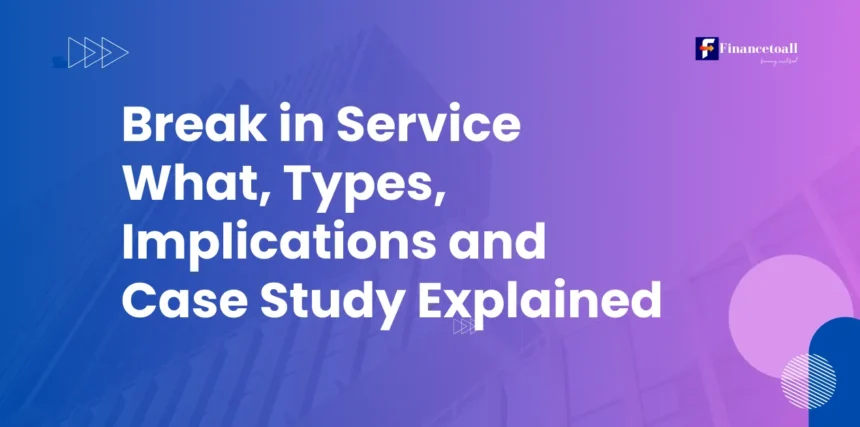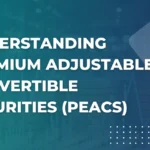Understanding Breaks in Service: What You Need to Know
In today’s dynamic employment landscape, breaks in service have become more common than ever. A break in service occurs when an employee experiences a gap in their employment with an organization. These breaks, including resignation, disability retirement, educational leave, and rehires, can happen for a variety of reasons, both voluntary and involuntary, and they can significantly impact both employees and employers.
This comprehensive guide explores the nuances of breaks in service, including their causes, legal frameworks, and the role of the 13-week rule. By understanding how different types of breaks such as disability retirement, educational leave, resignation, and pension affect benefits, seniority, and employment status, both employees and employers can navigate these transitions more effectively. Whether you’re an employee taking time off or an employer managing staff absences, this guide will provide insights into how breaks work and their implications.
Key Takeaways
What Is a Break in Service?
A break in service refers to a period during which an employee is not actively working for an organization. This break can occur for various reasons, ranging from personal choices to mandatory obligations like military service or medical leave. The duration and nature of a break can vary, and understanding the specifics of these breaks is essential for both employees and employers to manage expectations and plan accordingly.
For employees, a break in service may offer opportunities for personal development, family care, or recovery from health issues. For employers, breaks introduce complexities regarding staffing, benefits, and workforce continuity. Managing these breaks effectively can ensure minimal disruption to both the employee’s career and the organization’s operations.
How Breaks in Service Are Defined
A break in service is typically defined by the gap in active employment where the employee is not performing duties for the employer. These gaps can be classified into several categories:
- Voluntary Breaks: The employee chooses to take time off, such as taking a sabbatical, pursuing educational leave, or resigning to focus on personal matters.
- Involuntary Breaks: Circumstances beyond the employee’s control, such as layoffs, termination, or company closures.
- Legally Mandated Breaks: These occur when employees are required by law to take time off, such as for jury duty or military service.
- Health-Related Breaks: When employees take time off for medical reasons, either for their physical health or mental health needs.
- Temporary Breaks: Shorter, planned absences, such as maternity/paternity leave or variable hour employees whose work is seasonal in nature.
Each type of break in service carries its own implications regarding benefits, seniority, and re-employment status, which will be discussed in greater detail throughout this article.
Common Causes of Breaks in Service
Breaks in service can occur for a wide range of reasons, which can be broadly categorized into voluntary, involuntary, and legal causes. Understanding these causes helps employees plan for time off and helps employers develop policies to address such breaks efficiently.
Voluntary Causes
Voluntary breaks happen when an employee decides to leave their position temporarily or permanently. Common voluntary reasons include:
- Educational Leave: Some employees take time off to pursue further education, such as completing a degree, obtaining certifications, or attending training programs to enhance their skillset. Educational leave, whether a full break or a partial break, may be supported by the organization or be entirely at the employee’s discretion.
- Sabbaticals: A sabbatical is a more extended break granted by some employers, typically for academic, creative, or professional development purposes. Employees may also take a sabbatical for personal growth, travel, or exploration.
- Personal Leave: Personal reasons, such as the need to care for family members, travel, or simply take a break from the workforce to recharge, can lead to voluntary breaks in service.
- Resignation: Sometimes an employee voluntarily leaves their job altogether without immediate plans for re-employment, leading to a permanent break in service.
Involuntary Causes
Involuntary breaks in service occur when an employee is forced to take time off due to circumstances beyond their control. Common involuntary causes include:
- Layoffs: Due to economic conditions, organizational restructuring, or company downsizing, employees may be laid off, causing a break in service. While layoffs are often temporary, there is no guarantee of rehire.
- Termination: If an employee is terminated for performance-related reasons or other disciplinary issues, they experience an involuntary break in service.
- Company Closure: When a company shuts down permanently or temporarily, all employees face a break in service, often without certainty of return.
Legal Obligations
Certain breaks are mandated by law to protect employees under specific circumstances. These include:
- Military Leave: Under the Uniformed Services Employment and Reemployment Rights Act (USERRA), employees called to serve in the military are legally entitled to return to their civilian jobs with the same status, pay, and benefits after their service.
- Jury Duty: Employees called for extended jury duty are often required to take time off from their jobs, which can result in a break in service.
- Family and Medical Leave: The Family and Medical Leave Act (FMLA) allows employees to take up to 12 weeks of unpaid leave for medical or family reasons. Although this is a protected leave, it still represents a temporary break in active service.
Health-Related Breaks
Health-related breaks may occur due to the employee’s personal health challenges or the need to care for a loved one. These breaks include:
- Medical Leave: Employees may need time off to recover from surgery, illness, or other medical conditions. Depending on the length of the absence and company policy, this may result in a break in service.
- Mental Health Leave: With the growing recognition of mental health issues, more employees are taking an extended break specifically to address mental health concerns. These breaks can be either short-term or long-term, depending on the circumstances.
Temporary Breaks
Temporary breaks in service can happen for specific periods of time due to unique employment arrangements, such as:
- Seasonal Employment: In industries like agriculture, tourism, or retail, employees may face temporary breaks during off-peak seasons, leading to gaps in employment.
- Variable Hour Employee: Workers whose schedules fluctuate, such as freelancers or gig workers, may experience hour limitations between assignments or contracts, leading to temporary breaks in service.
Each of these types of breaks carries distinct consequences for employment status, benefit eligibility, and seniority, which we will discuss in detail below.
The 13-Week Rule and Its Importance
A key consideration in understanding breaks in service is the 13-week rule. This rule, followed by many organizations and enshrined in some legal frameworks such as the Affordable Care Act (ACA), determines whether a returning employee is considered a new hire or a rehire.
The 13-Week Rule Explained
The 13-week rule dictates that if an employee returns to work after a break longer than 13 weeks, they are generally considered a new hire for purposes of benefit eligibility and other employment considerations. However, if they return within 13 weeks, they are considered a rehire, and their previous employment status, including seniority, benefits, and time accrued towards tenure, may be reinstated.
Implications of the 13-Week Rule
The 13-week rule has several important implications for both employees and employers:
- If an employee returns after more than 13 weeks, which is considered an extended break, they are treated as a new hire. This means they might need to go through the new waiting period to requalify for benefits such as healthcare, retirement plans, and paid time off (PTO). The employee may also be subject to a probationary period, similar to any other new employee.
- Less than 13 Weeks: If the break is shorter than 13 weeks, the employee is considered a rehire, and benefits such as healthcare, retirement plans, and accrued leave are often reinstated without the need to complete a new waiting period. This is particularly important for employers in industries with frequent rehiring needs, such as retail, hospitality, and seasonal work.
Why the 13-Week Rule Matters
The 13-week rule is critical because it aligns with various legal requirements, including the ACA’s guidelines for coverage requirements and continuous medical coverage. This rule helps employers manage workforce fluctuations and allows employees to understand how their benefits and employment status may change after a break in service.
Employers must also consider how the 13-week rule intersects with their own policies, including rehire provisions, open enrollment periods, and plan eligibility rules for new hires and rehires alike.
Impact on Employee Benefits
One of the most significant areas affected by breaks in service is employee benefits. Employees rely on their benefits for financial security, healthcare, retirement savings, and paid time off. A break in service can disrupt access to these benefits, particularly if the break exceeds the 13-week rule threshold.
Healthcare and Insurance
Medical coverage is often one of the first benefits impacted by a break in service. If an employee returns after more than 13 weeks, they are typically treated as a new hire and must requalify for healthcare benefits, often by going through the open enrollment period or completing a new waiting period. COBRA (Consolidated Omnibus Budget Reconciliation Act) coverage might offer temporary insurance, but this comes at a higher cost, and it does not prevent the employee from having to requalify for employer-sponsored healthcare once rehired and Full-time rehires must be provided healthcare coverage immediately because they’ve already qualified to receive certain benefits during their prior employment.
Retirement and Pension Plans
For many employees, a significant concern during a break in service is how it affects their retirement and pension plans. Breaks can disrupt vesting schedules, delay contributions, and even result in the loss of accumulated retirement benefits if the break exceeds company thresholds for plan eligibility. Some organizations offer “bridging service” provisions, allowing employees to combine prior service with their new employment period, thereby protecting their retirement benefits.
Paid Time Off (PTO) and Leave Balances
A break longer than 13 weeks can also reset an employee’s accrued PTO or leave balances, especially if the break is treated as a termination of their previous employment. Employees returning after an extended break may need to start from scratch in terms of accruing leave, which can delay their ability to take additional time off.
Effect on Seniority and Tenure-Based Benefits
Seniority and tenure play critical roles in an employee’s career advancement, pay increases, and benefit eligibility. A break in service can significantly affect these aspects:
- Seniority Reset: If the break exceeds 13 weeks, many organizations reset the employee’s seniority, which can impact their eligibility for promotions, salary increases, and tenure-based benefits like additional vacation days.
- Loss of Tenure-Based Benefits: If an employee takes an extended break, they may lose benefits tied to their years of service, such as contributions to a pension plan or eligibility for sabbaticals.
Legal Considerations for Breaks in Service
Several laws and regulations protect employees during specific types of breaks in service. These legal frameworks ensure that employees do not lose important benefits or employment rights due to breaks that are beyond their control.
The Family and Medical Leave Act (FMLA)
Under FMLA, employees are entitled to take up to 12 weeks of unpaid leave for personal or family medical reasons, such as childbirth, adoption, or caring for a seriously ill family member. FMLA protects the employee’s job, meaning that the employer must allow them to return to the same or equivalent position after the leave period. However, while FMLA guarantees job protection, it does not prevent the employee from experiencing a temporary break in service, particularly if the leave extends beyond 12 weeks.
The Uniformed Services Employment and Reemployment Rights Act (USERRA)
USERRA provides protection for employees who leave their civilian jobs to serve in the military. Under this law, employees are entitled to return to their jobs with the same benefits, seniority, and pay as if they had not left. USERRA also ensures that employees are not discriminated against because of their military service, and their employment status must be fully restored upon return.
The Affordable Care Act (ACA)
The ACA’s coverage requirements play an important role in how employers manage breaks in service. Under ACA regulations, if an employee returns after more than 13 weeks, they are typically considered a new hire, which means they must meet the same benefit eligibility criteria as any other new employee. This includes satisfying the new waiting period for healthcare benefits. However, if the employee returns within 13 weeks, their benefits are often reinstated without disruption.
Organizational Policies on Breaks in Service
Many organizations have their own internal policies regarding breaks in service, particularly when it comes to rehiring employees after a break. These policies help standardize how employers manage benefit eligibility, seniority, and leave balances for returning workers.
Rehire Eligibility
Most organizations have a rehire provision in place that defines the conditions under which they will rehire former employees. For example, employees who return after a break of 13 weeks or more may be treated as new hires, while those returning within 13 weeks are considered rehired and may have their previous employment history reinstated.
Bridging Service
In some organizations, employees who return after a short break are allowed to “bridge” their previous employment with their new employment period. This allows the employee to retain their seniority, accrued leave balances, and other benefits as if there had been no break. However, this is typically only available for employees who return within a specified timeframe, often less than 13 weeks.
Temporary and Seasonal Employees
In industries with high rates of turnover, such as retail or hospitality, temporary and seasonal employees often experience breaks between periods of employment. These organizations typically have specific policies for rehiring these employees without requiring them to go through a full new hire process. For example, variable hour employees may be rehired after each season without losing their benefits or seniority.
Reinstatement and Rehire Considerations
When employees return to an organization after a break in service, several factors come into play regarding their employment status and benefits. Organizations must decide whether to reinstate the employee’s previous employment history or treat them as a new hire.
Recognizing Prior Service
If an employee’s break is shorter than 13 weeks, many organizations recognize the employee’s prior employment and reinstate their seniority and benefits. This allows the employee to return to work without needing to go through the new waiting period for benefit eligibility or accrue PTO from scratch.
Probationary Periods
Employees who return after a break longer than 13 weeks are often required to complete a new probationary period, even if they had already completed one during their previous employment. This ensures that the employer can assess the employee’s fit with the organization after an extended break.
Impact on Benefit Eligibility
One of the most important considerations for rehired employees is how their break in service impacts their benefit eligibility. As mentioned earlier, employees who return after more than 13 weeks are often treated as new hires, which means they may need to go through the same benefit eligibility process as any other new employee. This includes satisfying the new waiting period for healthcare, retirement contributions, and other benefits.
Effect on Seniority and Leave Balances
For employees returning after a partial break, seniority and leave balances are often restored as if there had been no break in service. However, for those returning after a longer break, seniority may be reset, and they may need to start accruing leave from scratch.
Impact on Career Development
A break in service can significantly impact an employee’s career trajectory, especially if the break is extended. While some employees use their time away from work to pursue further education or professional development, others may find that an extended break causes them to miss out on opportunities for advancement.
Skill Maintenance
One of the challenges of an extended break is the risk of skill degradation. Employees who take time off may miss out on training and development opportunities within their field, which can leave them less competitive when they return to work. This is particularly important for industries that experience rapid technological changes or require continuous professional development, such as IT, healthcare, or engineering.
Career Progression and Promotions
For employees seeking advancement, an extended break can delay promotions or other career opportunities. When an employee returns to work after a break, they may find that colleagues who stayed with the company have advanced, while they need to catch up. In some cases, the employee’s seniority may be reset, making them ineligible for promotion for a certain period.
Strategies for Staying Competitive During a Break
To mitigate the effects of a break in service on their career, employees can take proactive steps to stay competitive. This may include taking online courses, attending workshops, or participating in industry events to
stay current on trends and developments in their field. Additionally, maintaining contact with professional networks during the break can help employees remain connected to potential career opportunities.
Real-Life Examples and Case Studies
To better understand the impact of breaks in service, it’s useful to examine real-life examples and case studies from various industries. These examples illustrate how breaks affect both employees and employers, and how organizations handle rehiring and benefit eligibility after a break.
Case Study 1: A Short-Term Break for Personal Reasons
An employee working in the finance industry decides to take a three-month unpaid leave to care for a family member. During the break, the employee is not contributing to their retirement plan, and they lose access to employer-sponsored healthcare. However, because the employee returns within 13 weeks, they are considered a rehire, and their benefits are reinstated without any new waiting periods. The employee also retains their seniority and accrued leave balances.
Case Study 2: A Year-Long Break for Educational Leave
A software engineer decides to take a year break from work to pursue an advanced degree in computer science. After completing their degree, they return to the same company, but because their break exceeds 13 weeks, they are treated as a new hire. This means they must go through the new waiting period for healthcare and retirement benefits, and their seniority is reset. However, the new skills gained during their degree program make them eligible for a promotion shortly after rejoining the company.
Case Study 3: Layoff and Rehire in Retail
A retail worker is laid off due to economic conditions during the off-season. After six months, the company rehires the worker as part of its seasonal workforce. Since the break was longer than 13 weeks, the worker is considered a new hire and must requalify for benefits. However, because the worker had accrued significant experience with the company in previous seasons, they are quickly promoted to a supervisory role.
Types of Break in Service
1. Voluntary Breaks in Service
Voluntary breaks occur when an employee chooses to leave their job for personal or professional reasons. These breaks can range from a few weeks to several years, depending on the circumstances. Common types of voluntary breaks include:
- Educational Leave: An employee may take time off to pursue further education or obtain professional certifications.
- Sabbatical: Some employees take extended leaves for personal development, research, or travel.
- Resignation: When an employee voluntarily leaves their job to explore other career opportunities or take a break from work.
2. Involuntary Breaks in Service
Involuntary breaks are caused by external factors that force the employee to take time off. These breaks include:
- Layoffs: When an organization downsizes or restructures, leading to temporary or permanent layoffs.
- Termination: When an employee is let go due to performance or behavioral issues.
- Company Closure: When a company shuts down or undergoes bankruptcy, leading to an involuntary break for all its employees.
3. Legally Mandated Breaks
Certain breaks are required by law, protecting the rights of employees in specific situations. These include:
- Military Leave: Under USERRA, employees serving in the military are entitled to return to their jobs with full benefits.
- Jury Duty: Employees called for jury duty may experience a break in service if the duty extends for an extended period.
- Family and Medical Leave: The FMLA ensures job protection for employees taking up to 12 weeks off for medical or family reasons.
4. Health-Related Breaks in Service
Health-related breaks occur when an employee takes time off due to personal or family health issues. These include:
- Medical Leave: Time off for recovery from surgery, illness, or other medical conditions.
- Mental Health Leave: Growing awareness of mental health needs has led to more employees taking breaks specifically for mental health reasons.
5. Temporary Breaks in Service
Temporary breaks often occur in industries with seasonal or variable hour employees. Common types of temporary breaks include:
- Seasonal Employment: Industries such as agriculture, tourism, and retail often have employees who face temporary breaks during the off-season.
- Variable Hour Employees: Freelancers or gig workers may experience breaks between assignments or projects.
6. Parental Leave
Parental leave is another common reason for a break in service. This includes:
- Maternity/Paternity Leave: Time off for the birth or adoption of a child. Depending on the length and company policy, this may or may not be treated as a break in service.
- Adoption Leave: Time off for the process of adopting a child and the initial bonding period.
- Temporary breaks in service related to such reasons as childbirth, pregnancy, child adoption, or any reason under the Family Medical Leave Act of 1993, do not count.
7. Educational Breaks in Service
Educational leave allows Full time employees to take time off to pursue further studies or certifications. Common types of educational breaks include:
- Study Leave: Time off to pursue full-time study, often for advanced degrees or professional certifications.
- Training Programs: Some organizations offer employees time off to attend training programs or workshops, which may be treated as a break in service.
8. Temporary Disability
Breaks in service may also occur due to disability. These include:
- Short-Term Disability: Employees temporarily unable to work due to injury or illness may take a break while recovering.
- Long-Term Disability: If an employee becomes disabled for an extended period, this may result in a longer break in service depending on the organization’s policies.
9. Government Service
In some cases, employees may take a break in service to serve in public office or government roles. These breaks include:
- Public Office: Employees taking time off to serve in elected or appointed government positions may return to their jobs after their term ends, depending on employer policy and the length of the break.
Tips for Managing Breaks in Service
Both employees and employers can take steps to effectively manage breaks in service, minimizing negative impacts on benefits, career progression, and organizational stability.
For Employees
- Stay Informed: Before taking a break, consult with your HR department to understand how the break will affect your benefits, seniority, and rehire status.
- Keep Skills Current: Take advantage of online courses, workshops, or industry events to stay competitive during your break.
- Plan Financially: Prepare for the financial impact of a potential break in service by saving in advance and understanding how a reset of benefits might affect you.
For Employers
- Develop Clear Policies: Create clear guidelines for how breaks in service are handled, particularly regarding rehire eligibility, bridging service, and benefit eligibility.
- Communicate with Employees: Ensure that employees understand the potential impact of a break in service, including how the 13-week rule applies to them.
- Offer Support During the Transition: Provide employees with resources and support as they return to work, ensuring a smooth transition back into the organization.
Conclusion
Breaks in service are increasingly common in today’s workforce, and understanding the 13-week rule is essential for navigating how benefits, seniority, and career progression are affected. Both employees and employers can take proactive steps to manage these transitions smoothly. By being informed and developing clear policies, organizations can minimize disruptions and ensure that returning employees reintegrate seamlessly into the workforce.
FAQs on Breaks in Service
Q.1 What is a break in service?
A break in service refers to a period during which an employee is not actively employed by an organization. This gap can occur due to voluntary reasons, such as taking time off for personal matters, or involuntary reasons, like layoffs or termination.
Q.2 How does the 13-week rule impact a break in service?
The 13-week rule is a common threshold used by many organizations to determine if a returning employee is classified as a rehire or a new hire. If an employee returns to the company after more than 13 weeks, they are typically treated as a new hire, which may require them to requalify for benefits. If they return within 13 weeks, they are generally considered a rehire, and their previous benefits and seniority may be reinstated.
Q.3 What are the common reasons for a break in service?
Breaks in service can occur for various reasons, including:
Voluntary resignation
Layoffs or termination
Sabbaticals
Military service
Parental leave
Medical or mental health leave
Educational leave
Q.4 How does a break in service affect my benefits?
A break in service can impact benefits such as healthcare, retirement plans, and paid time off. If the break exceeds 13 weeks, you may need to requalify for these benefits as a new hire. Shorter breaks might allow for the continuation of benefits without significant interruption.
Q.5 Will my seniority reset after a break in service?
Seniority may reset if the break in service exceeds the 13-week threshold, depending on the company’s policy. This can affect your eligibility for promotions, salary increases, and tenure-based benefits like additional vacation days.
Q.6 Can I be rehired after a break in service?
Yes, many organizations rehire employees after a break in service. However, whether you are considered a rehire or a new hire depends on the length of the break and company policy. Breaks longer than 13 weeks typically result in the employee being treated as a new hire.
Q.7 What legal protections do I have during a break in service?
Various laws protect employees during specific types of breaks. For example, the Uniformed Services Employment and Reemployment Rights Act (USERRA) protects employees who take breaks for military service, ensuring they can return to their jobs with the same status and benefits. The Family and Medical Leave Act (FMLA) provides job protection for up to 12 weeks for medical or family-related leave.
Q.8 How can I maintain my skills during a break in service?
To stay competitive, consider taking online courses, attending workshops, or staying engaged with your professional network during your break. This can help you maintain and even enhance your skills, making the transition back to work smoother.
Q.9 What should employers do to manage breaks in service?
Employers should develop clear policies regarding breaks in service, especially concerning the 13-week rule. Communicating these policies effectively to employees and offering support during and after the break is crucial for managing the process smoothly.
Q.10 Can I lose my retirement benefits due to a break in service?
Breaks in service can impact your retirement benefits, particularly if the break exceeds 13 weeks. In such cases, you might lose certain retirement contributions or need to requalify for benefits. It’s important to review your organization’s specific retirement plan rules to understand the implications.
Q.11 How do I know if my break in service is voluntary or involuntary?
A voluntary break in service occurs when you choose to leave your job, such as for personal reasons or a sabbatical. An involuntary break happens when the decision is out of your control, like during layoffs, termination, or company closures.
Q.12 What is “bridging service,” and how does it apply to breaks in service?
Bridging service is a policy where an organization recognizes an employee’s prior service when they are rehired within a certain period, often less than 13 weeks. This allows the employee to retain their seniority and benefits as if they had not left the company.
Q.13 Can a short-term disability result in a break in service?
Yes, if the short-term disability extends beyond the period covered by your employer’s disability leave policy, it might result in a break in service, depending on how the company defines breaks and manages disability leave.
Q.14 What should I do if I’m planning a break in service?
If you’re planning a break in service, consult with your HR department to understand the potential impact on your benefits, seniority, and reemployment status. Also, consider how to stay engaged with your profession during the break to minimize any negative impact on your career.








